Navy Petty Officer 2nd Class Benjamin Markway, a member of the COVID-19 Rapid Response Team aboard the USS Germantown, sprays disinfectant on a Marine tactical vehicle in Okinawa, Japan, Aug. 27, 2020.
Providing up-to-date information, news and original content on American Military issues.
Navy Petty Officer 2nd Class Benjamin Markway, a member of the COVID-19 Rapid Response Team aboard the USS Germantown, sprays disinfectant on a Marine tactical vehicle in Okinawa, Japan, Aug. 27, 2020.
Louisiana Air National Guardsmen work to remove disconnected power lines from trees knocked down by Hurricane Laura in Lake Charles, La., Aug. 30, 2020.
USS Germantown, left, and USS America maneuver out of a tactical formation during security and stability operations in the Philippine Sea, Aug. 25, 2020.
Anthony Marshall removes cell starting material from liquid nitrogen storage at Walter Reed Army Institute of Research in Silver Spring, Md., Aug. 26, 2020, signifying the initiation of the institute’s vaccine material. The institute is supporting COVID-19 response efforts.
Marine Corps Cpl. Andrew Abbott launches a RQ-20B Puma small unmanned aircraft system at Mount Bundey Training Area, Northern Territory, Australia, Aug. 18, 2020. The Marines are working with the Australian army’s forward observers to support fire missions with real time video feeds from the Puma.
Sept. 2, 2020 | BY David Vergun , DOD News
There is broad, bipartisan support for the modernization of the nuclear triad, which includes bombers, intercontinental ballistic missiles, submarines and the systems that control them, a Defense Department expert said.
Robert Soofer, the deputy assistant secretary of defense for nuclear and missile defense policy, also said support is more divided for the creation of W76-2, which is a class of low-yield, tactical nuclear warhead that is different from those in the nuclear triad. An example would be a submarine-launched ballistic missile nuclear warhead.
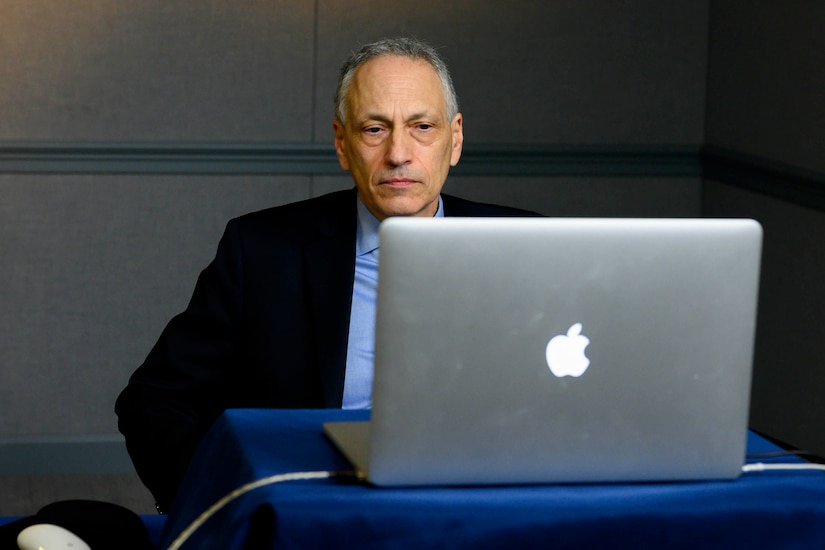
To understand the divide over support for W76-2, one must have an understanding of the two schools of thought on the best approach to nuclear deterrence, Soofer told the Air Force Association Mitchell Institute's Nuclear Deterrence Forum today.
Each school of thought has its advocates, including members of Congress, interest groups and think tanks, he noted.
The first school of thought is known as simple nuclear deterrence, sometimes referred to as minimum deterrence. The thought is that deterrence is best achieved with a limited number of nuclear weapons that, for example, could destroy a certain number of an adversary's cities, Soofer said. The viability of the deterrence is created by an adversary's fear of uncontrolled nuclear escalation.
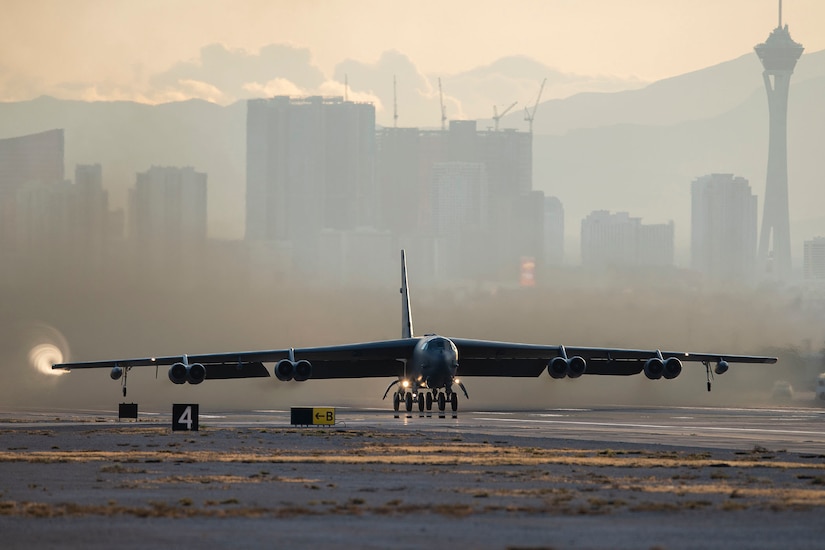
The second school of thought is known as complex nuclear deterrence. This recognizes that nuclear deterrence can be more complicated, requiring an understanding of the adversary and various scenarios that could play out, he said. This strategy also pays close attention to the nuclear balance and places a premium on ensuring the survivability of nuclear forces that can threaten the adversary.
The complex nuclear deterrence approach has been the basis of U.S. nuclear policy since about the 1960s, and it rests on presenting the president with a number of options and capabilities — particularly in a regional conflict — that would deter Russia's nuclear use in any scenario, he said.
This is particularly important since Russia has expanded its nuclear capability, and has espoused a doctrine of limited first use, meaning the use of low-yield tactical nuclear warheads, Soofer said.
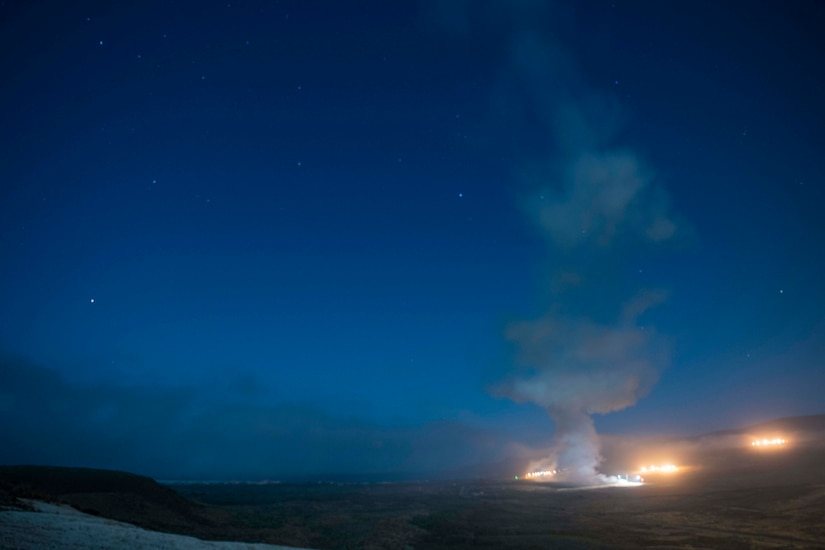
Having W76-2 capability demonstrates to Russia that the U.S. has taken practical steps to ensure that adversaries can derive no benefit from even limited nuclear use, he said.
There is a very high bar that must be met before the president, who is the only one who can order the use of nuclear weapons, will contemplate the use of W76-2 warhead, or any other nuclear weapon for that matter, Soofer said.
Having a range of nuclear weapons capabilities not only deters nuclear attacks, but it also deters large-scale conventional and biological and chemical attacks and reassures allies and partners, he said.
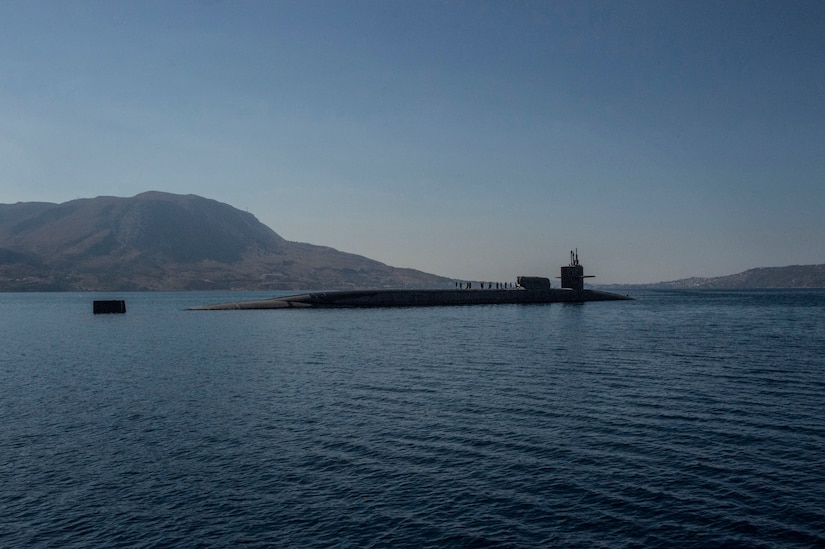
That is why the U.S. has not adopted a "no use first" policy when it comes to using nuclear weapons, he said, adding that circumstance for first use would have to be extreme, meaning to defend the vital interest of the U.S., allies and partners.
The objectives of the U.S. nuclear strategy are two-fold, he said. "First and foremost is to deter war, both conventional and nuclear; second, should nuclear deterrence fail, [is] to deter further nuclear use and hopefully bring the war to an end before the worst imaginable nuclear catastrophe unfolds."
Therefore, the U.S. nuclear strategy doesn't rely solely on massive and immediate attacks against an adversary, he said, though the U.S. maintains this capability to deter adversaries from contemplating a first strike against the United States. "Massive attacks would represent the failure of our nuclear strategy. Rather, our nuclear strategy as articulated in the [2018] Nuclear Posture Review calls for tailored deterrence with flexible capabilities, including an appropriate mix of nuclear capability and limited, graduated response options — something administrations over the last six decades have valued," Soofer said.
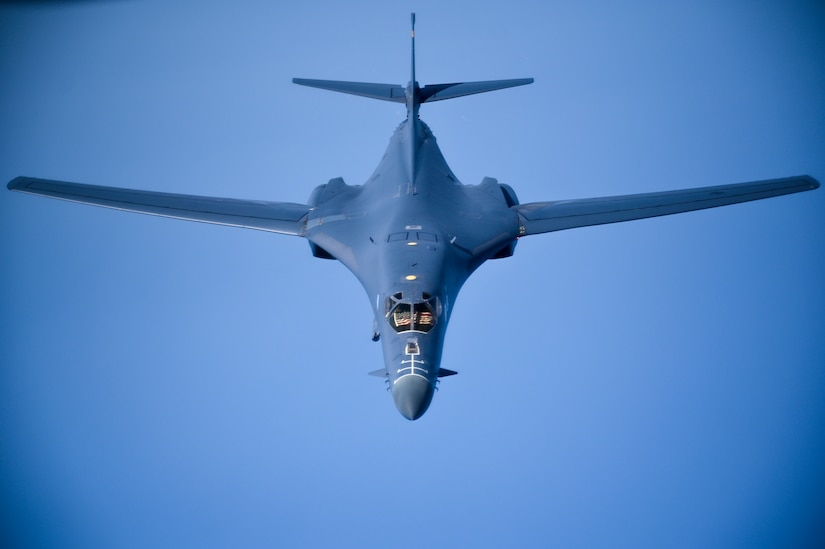
In sum, U.S. nuclear strategy is one of resolve and restraint, he said. "Our limited use of nuclear weapons in response to a Russian or Chinese attack is intended to demonstrate resolve, convincing the adversary that it has really miscalculated when it contemplated the use of nuclear weapons."
The strategy also communicates restraint, sending a message to the adversary that it has much more to lose if it continues down the path of nuclear escalation, he said.
Below are some great opportunities for high school students through those working on their doctorate, also to include faculty. Please share this info, and don’t hesitate to contact me if you have any questions.
The following Navy and DoD Internships, Scholarships, and Fellowships have application portals already open or that will be opening on September 1, 2020!
The Naval Research Enterprise Internship Program (NREIP) is a 10-week paid undergraduate and graduate research internship opportunity at one of nearly 30 naval laboratories or warfare centers. Accepted students gain real-world, hands-on experience and research skills while being introduced to the Navy and Marine Corps science and technology environment. Please refer to the program website listed below for additional information, including details about potential stipends and benefits. https://nreip.asee.org/ (application portal open 1 Sep – 30 Nov)
The Science, Mathematics and Research for Transformation (SMART) program is a scholarship for service program is an opportunity for students pursuing an undergraduate or graduate degree in STEM disciplines to receive a full scholarship and be gainfully employed upon degree completion. Please refer to the program website listed below for additional information, including details about potential stipends and benefits.
https://www.smartscholarship.org (application portal open NOW- 1 Dec)
The National Defense Science and Engineering Graduate (NDSEG) program provides fellowships to support study and research leading to doctoral degrees in science and technical areas. NDSEG confers high honors upon its recipients, and allows them to attend whichever U.S. institution they choose. Please refer to the program website listed below for additional information, including details about potential stipends and benefits.
https://ndseg.sysplus.com (application portal open NOW – 2 Nov)
For High School students, we have an 8-week paid summer internship for them! The Science Engineering Apprenticeship Program (SEAP) is an 8-week high school apprenticeship opportunity at one of nearly 25 naval laboratories or warfare centers. Accepted students gain real-world, hands-on experience and research skills while being introduced to the Navy and Marine Corps science and technology environment. Please refer to the program website listed below for additional information, including details about potential stipends and benefits.
https://seap.asee.org/ (application portal open 1 Sep – 30 Nov)
If you know any College/University Faculty, the Office of Naval Research has Faculty Programs!
n The Sabbatical Leave Program (SLP) provides an opportunity for faculty to participate in naval-relevant research at a DoN laboratory or warfare center during the academic school year
n The Summer Faculty Research Program (SFRP) provides an opportunity for faculty to participate in research at a DoN laboratory or warfare center from May through August
https://www.onr.navy.mil/en/Education-Outreach/faculty (application portal open 1 Sep – 10 Dec)
Sept. 2, 2020
AS PREPARED
Aloha everyone, and thank you for joining us on this special day. Thank you, Admiral Davidson, for that kind introduction, and thank you to Governor Ige for the warm welcome and hospitality. It is my great honor to be on the deck of this historic ship as we commemorate the 75th anniversary of the end of World War II, and reflect on the sacrifices and victories of our Service members and allies who helped fight for – and secure – peace.
I would like to extend a very special welcome to the members of the Greatest Generation here with us this morning, whose remarkable stories of courage and heroism are forever etched into our Nation’s heart and history. It is because of your selfless service and sacrifice that we live in peace and prosperity today. And it is your legacy that inspires us in our efforts to uphold the freedoms and values for which you so nobly fought. Thank you!
It is fitting that we are gathered here on the USS Missouri, where the conflict in the Pacific came to an end on this day, in 1945. This ship, which was built for war, has since been dedicated to peace and reconciliation. It now rests in the very harbor where more than 2,400 Americans paid the ultimate price nearly eight decades ago, at the beginning of World War II. This morning, we pay tribute to all those we lost on that infamous date in 1941, and to the millions more who demonstrated our collective resolve and commitment to freedom in the years of war and hardship that followed.
We remember heroes like Floyd Welch, an electrician’s mate, who helped save the lives of more than 30 sailors trapped in the sinking USS Oklahoma. With pinpoint precision, he cut holes in the ship’s hull, freeing the sailors without igniting fuel cells.
And, we honor sailors like Mess Attendant Dorie Miller – the namesake of the Navy’s newest aircraft carrier. Miller assisted his mortally wounded Captain aboard the USS West Virginia, then manned an anti-aircraft gun, with no formal training, to blunt the onslaught of enemy fighters and bombers.
Since then, the memory of these men and those we lost in the attack on December 7th has served as an eternal reminder of the consequences of war – the human toll and tragedy – the debt paid in freedom’s name, and the imperative of remaining ever vigilant.
Throughout the war, millions of our countrymen answered the Nation’s call with great courage and selflessness. Americans of all faiths, races, and ethnicities; from all walks of life and vocation, rich to poor; and from all corners of the country, from cities to suburbs to farms – they left behind their loved ones, men and women alike, to sail across oceans and join allies in a desperate fight for liberty.
From the deserts of Tunisia, to the islands of Midway; and from the beaches of Normandy, to the hills of Iwo Jima, these intrepid patriots stood arm-in-arm, and shoulder to shoulder, with our allies, determined to achieve total victory no matter how long it took.
Meanwhile, on the home front, millions of other Americans served as civil defense volunteers, learning essential skills such as first-aid, air defense, and firefighting. Many more bought war bonds, rationed consumer goods, and recycled scarce materials.
Entrepreneurs, innovators, and production workers transformed assembly lines and industrial plants into the arsenal of democracy, ensuring military production kept pace with the needs of our Soldiers, Sailors, Airmen, Marines, and Coast Guardsmen. And, most importantly, though often separated by great distances and different challenges, the American people forged an unbreakable commitment to the cause of liberty, one that lives on to this day.
World War II was an inflection point in the history of our great nation – and for humanity writ large. The global fight against tyranny and oppression cost more than 70 million lives and caused unimaginable loss for the United States and our allies. Virtually no household was left untouched by the scale or scope of its wanton destruction.
The human toll of the deadliest conflict in history led to the creation of a new world out of the rubble of the old, one that began with Imperial Japan’s surrender on this ship, 75 years ago. The war fundamentally altered the global balance of power and reshaped the international order into one led by like-minded nations, grounded in common purpose and shared values that prepared them well for a decades-long struggle against Soviet communism that would soon follow.
In the aftermath of World War II, the United States assumed the mantle and responsibility of leadership, recognizing that the Atlantic and Pacific Oceans would no longer protect us from conflicts started abroad; from ideologies with hegemonic ambitions; or from governments with malign intentions. It was America’s time to lead, and we did so guided by our founding principles and core values.
The United States rose to that challenge. We built relationships with like-minded nations based on reciprocal trade, not predatory economics; based on respect for the sovereignty of all countries, not a strategy of “might makes right”; based on a commitment to always honoring our international obligations, not just when they serve our interests; and most importantly, based on our enduring values and beliefs.
The result was today’s international rules-based order that has provided security, prosperity, and stability to billions of people around the world for well over a half century. It set new standards and protocols when it comes to matters of trade and diplomacy; it raised the bar when it comes to human rights and individual freedoms; and it created new expectations regarding the use of force and the way countries should treat one another.
Today, in the face of new challenges to this free and open order, we are working to build an even broader coalition of partners – one that includes both longtime friends and former adversaries – to protect the hard-fought gains of generations past and present…especially in the Pacific. We share an important goal – defending the sacred principles that benefit us all: democracy, liberty, sovereignty, human rights, mutual respect, and the rule of law.
To do so, we continue to forge new partnerships and strengthen our existing ones across this region – from our alliances with Japan, South Korea, and Australia, to our long collaboration with ASEAN countries, India, New Zealand, and the Pacific Islands. Growing, deepening, and unifying this network must remain central to our collective strategy to ensure peace and prosperity for another 75 years and beyond. We welcome every nation – especially those that have benefited the most from today’s international system – to join us in this effort.
For decades, the United States and our partners have based our efforts on the belief that today’s free and open order, however imperfect, is worth fighting for. And while this system has largely remained intact, we cannot take it for granted or leave its future up to chance. That is why, together, we are committed to improving it and remain ready to defend it – much like the Greatest Generation did when history called and fate challenged them.
Seventy-five years ago today, the great American naval hero Admiral Chester Nimitz sent a message to the Pacific Fleet regarding the end of the war. He reflected on the heavy cost of victory, and our “solemn obligation” to the fallen, which was, in his words, quote: “The obligation to ensure that their sacrifice will help to make this a better and safer world in which to live.”
Our work today continues in this spirit. As we look to the path ahead, we honor the legacy of those who came before us, and recommit ourselves to defending today’s international rules and norms so that the world is safer and better for generations yet to come.
This means embracing the importance of what President Ronald Reagan called “peace through strength,” and building a military and alliance structure to match that imperative.
The United States’ commitment to the world today is the same one we made to the freedom-loving people of the world in 1941: that we will remain ready to fight any foe and defend any friend; and, that we will safeguard our values and all that we hold dear, at every turn, in any place. We will not back down, and we will not yield. Freedom is far too precious to do otherwise; and the sacrifice of those who came before us, far too great.
Ladies and Gentlemen, thank you once again for commemorating this historic anniversary with us today. May God bless the members of the Greatest Generation, and all of our veterans, Service members, and allies across the globe.
And, may God bless the United States of America.
Thank you.
Soldiers deliver personal protective equipment to schools across Montana, Aug. 31, 2020, as part of COVID-19 response efforts.
Sept. 1, 2020 | BY C. Todd Lopez , DOD News
Over the next 10 years, it's expected China will double the number of nuclear warheads it possesses, while embarking on an effort to expand the ways it can deploy its nuclear capability, Deputy Assistant Secretary of Defense for China Chad L. Sbragia said at the American Enterprise Institute.
He discussed findings of a just-released Defense Department report, "Military and Security Developments Involving the People's Republic of China -- 2020."
"The report does contend that there are currently an estimated low-200s in terms of warhead stockpiles, and it's projected to at least double in size over the next decade as China expands and modernizes its nuclear forces," Sbragia said.
But equally as important is how China would be able to deliver those warheads. It intends to develop a "nuclear triad" similar to the one the U.S. has and is currently working to modernize.
"The report [also] notes that China is expanding, modernizing and diversifying its nuclear forces across the board," Sbragia said. "Just looking at the number of warheads by itself is not the entire picture, or doesn't paint a holistic understanding of where the Chinese are or where they want to go.
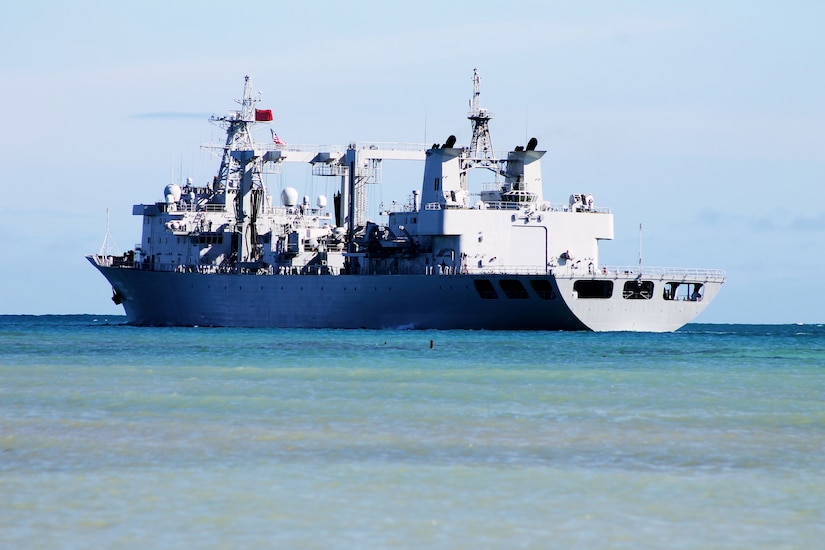
A nuclear triad, as it exists in the U.S., allows for land-based missile delivery, sea-based delivery from submarines and air-based delivery with bombers.
Within the next decade, Sbragia said, China plans to expand its ballistic submarine fleet and field more capable, longer-range, sea-launched ballistic missiles. It also plans to complete the development of its nuclear-capable, air-launched ballistic missiles along with bombers to deliver them. On the ground, he said, China plans to field additional mobile ICBMs and also possibly expand its silo-based ICBM capability.
"As has been noted by others, and then as the report contends ... they're obviously in pursuit of the full suite of capacities ... to include the building out of infrastructure for a more modernized, capable and larger capacity in this area," Sbragia said.
Sbragia said that the report also concludes that, besides its investments in nuclear capability, China aims to transform the People's Liberation Army into a "world-class military" by around 2050.
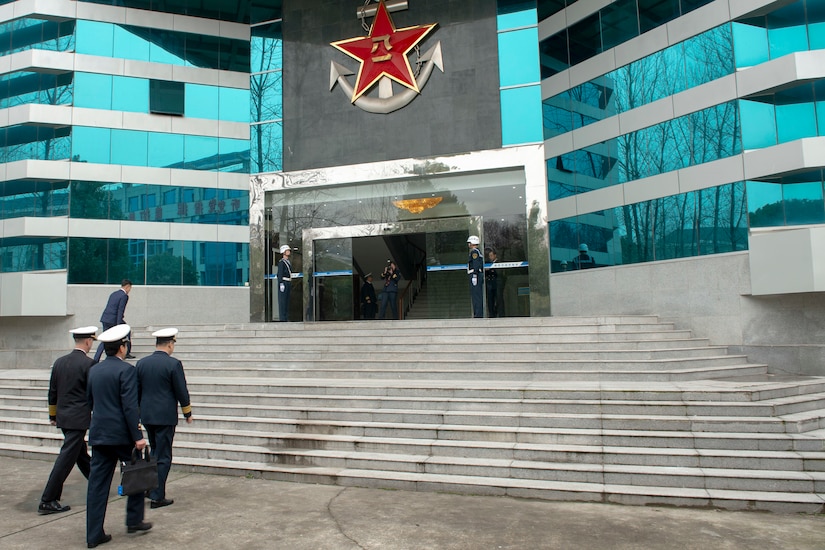
"While China has not defined exactly what 'world-class military' means, it is likely that China will seek to build a military that is equal to or in some cases superior to the U.S. military or the military of any other great power that China perceives as a potential threat," Sbargia said.
One aspect of that advancement towards a world-class military, he said, is power projection. The Chinese want their military to be able to operate anywhere on the globe. One step towards that is the establishment of a more robust overseas logistics network.
According to the report, China is "very likely already considering and planning for" the establishment of military logistics facilities outside China that can support naval, air and ground forces.
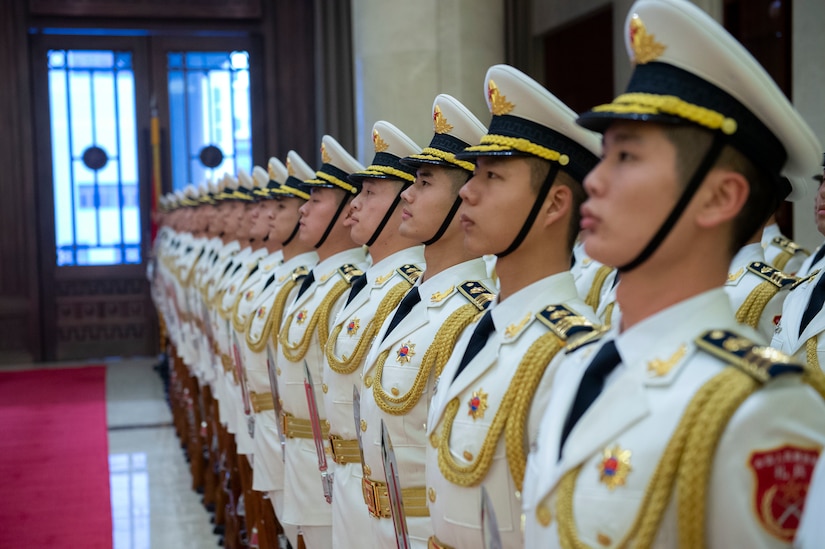
Some locations that they may now be considering include Myanmar, Thailand, Singapore, Indonesia, Pakistan, Sri Lanka, the United Arab Emirates, Kenya, the Seychelles, Tanzania, Angola and Tajikistan. China already has a military installation in Djibouti.
"The Chinese do have ... an aspiration for great power status by virtually every measure of comprehensive or composite national power that you can measure," Sbragia said. "To achieve that, it means that they have to have ... global convergence at the broadest scale possible. For the PLA, that means that they do have the intent to go out. I think that's certainly one of the aspects of what 'world-class military' means ... the capacity to have influence at distance, at a time and place of their choosing. They certainly aspire to do that.
Sept. 2, 2020 | BY WINIFRED BROWN, ARMY
As a whole, patrons have responded well to the measures put in place. They are aware of the need for precautions and are happy most facilities are open, so they have stringently followed protocols, Stefan Thompson, chief of fitness, athletics and aquatics for Camp Zama's Family and Morale, Welfare and Recreation, said.
The Army follows five health protection condition levels, and Camp Zama is currently at HPCON C.
Under HPCON B and C, personnel have placed hand sanitizer and disposable towels at strategic locations throughout the facilities, provided a bleach solution approved by Public Health Activity-Japan, ventilated rooms, instituted room capacities and spaced exercise equipment to comply with social distancing measures, Thompson said.
In addition, under HPCON C, the locker rooms are closed, there are no group fitness classes and the spa and sauna areas are closed, Thompson added.

Other initial considerations include reduced operating hours to limit the number of people using the facilities, Thompson said.
"The staff has been doing such a great job cleaning, customers have been very accountable, and primarily, have been following all of the rules," Thompson said. "We have our normal operating hours at this point."
At the Yano Fitness Center, about 65% of the facility's exercise equipment is in the gym with windows open and fans on to provide as much ventilation as possible, Thompson said.
"Plus it allows us to disburse the equipment with a very generous two- to three-meter distance between each machine to not breach the social-distancing mitigation," Thompson said.
At satellite facilities, such as the Sagamihara Family Housing Area Gym, personnel have made hand sanitizer and bleach solution available at all times and have placed exercise equipment with social distancing in mind, Thompson said.
Because there are no personnel on duty at the SFHA Gym, personnel depend on a community policing concept to ensure people are following the rules, Thompson said. The gym at Sagami General Depot is currently closed for construction and the relocation project is underway.
"We have signage posted at the facilities alerting [patrons] to our numbers if there's a safety breach of any kind, not just a COVID-19 protocol," Thompson said. "We highly encourage patrons to give us a call so we can get somebody on site and check out and analyze the situation."
Patrons help make the system work, Thompson said.
"If something doesn't look right, please bring it to our attention, and we'll take a look at it and see if we have to take other action," Thompson said.
Patrons should come in clean and use hand sanitizer on their way in and out to make sure their hands are clean, Thompson said.
"Also, just heed the posters," Thompson said. "They ask patrons to please disinfect equipment before and after each use, and use the hand sanitizer."
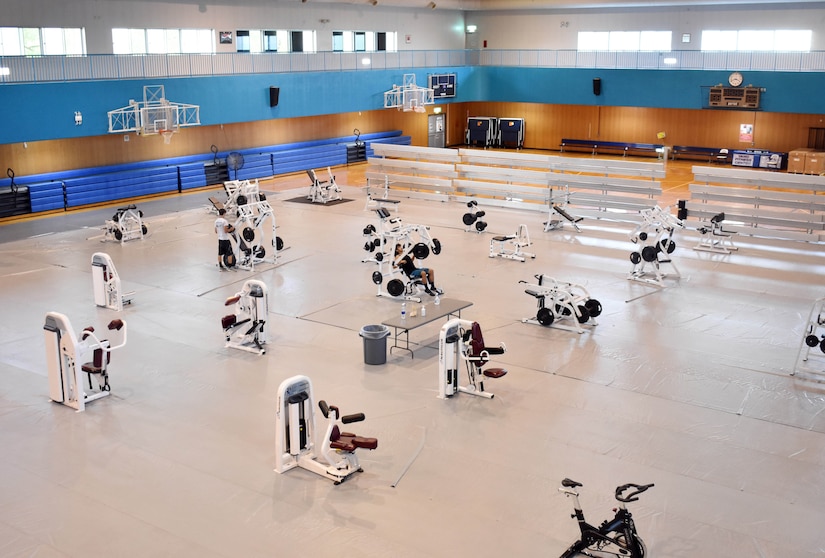
In terms of the pools, the Yano Fitness Center pool is open with one patron per lane, lap swimming only and no group physical training formations, Aaron Messisco, aquatics manager for Camp Zama's FMWR, said.
The SFHA Pool is open, and allows up to 60 people to enter for three, two-hour waves throughout the day, Messisco said. The locker rooms and the barbecue pavilion are closed.
Thompson said that FMWR personnel consult with officials at Public Health Activity-Japan before making any decisions, every step of the way.
Also, it is especially important during the current postures that all patrons either check in electronically by scanning their ID card, or sign in when using all fitness facilities, Thompson said.
(Winifred Brown is assigned to the U.S. Army Garrison-Japan).
Sept. 2, 2020 | BY AIR FORCE TECH. SGT. RYAN CAMPBELL , New York National Guard
Recruiters who support the Herkimer region shifted their focus from recruiting new soldiers to supporting their community as a result of COVID-19 and the hardships it has brought.
County legislators were able to arrange 1,200 boxes of milk and 1,200 boxes of produce donated by the American Dairy Association North East and local farmers associations to hand out to community members in need.
"As COVID-19 has made recruiting events scarce, my team has really focused on supporting community service functions to stay in contact with our local populations and maintain a positive and visible presence," Army Sgt. 1st Class Jessica Girard, the noncommissioned officer in charge of the recruiting team, said.
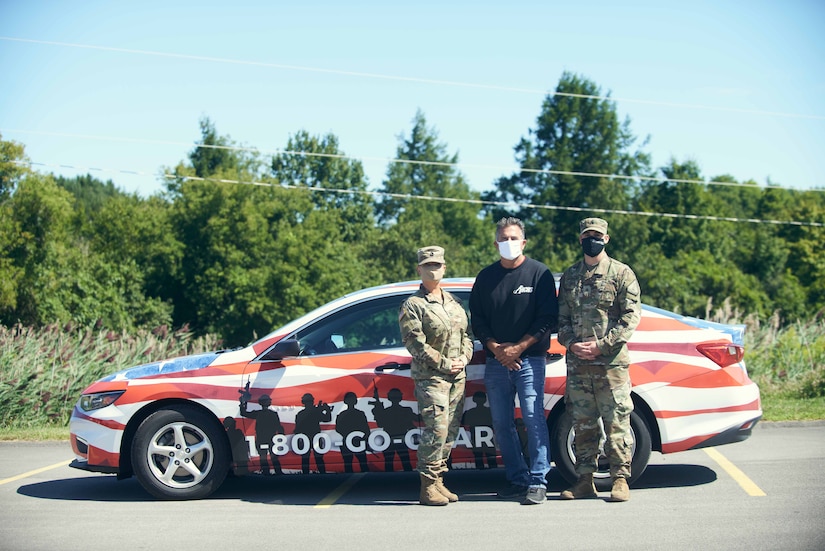
According to Girard, this is the third time dairy and produce has been distributed in the county with the Guard taking part in the most recent two. More than 1,000 families have come through the three distribution events, she added.
"This isn't a mission that was assigned to the Army National Guard," Girard said. "This is a mission a local recruiting team volunteered for, to show up when people need help."
The roads leading to the college were lined with vehicles well before the 11 a.m. scheduled start time. Police and guardsmen along the way to directed residents where to go.
"It's just simply the right thing to do, helping out our communities," Army Sgt. Steven Ludwig, a recruiting and retention noncommissioned officer for Herkimer County, said.
Ludwig said that by the end of the four hours the distribution site was open, 500 gallons of milk and 15,000 pounds of produce were handed out to families. They would pull up in their vehicles, and volunteers would place the items in their trunk, ensuring contactless distribution.
"As far as we know, this will go on till around October," Ludwig said. "The location will change, but as long as it's anywhere in our area, our recruiting team will come out to help."
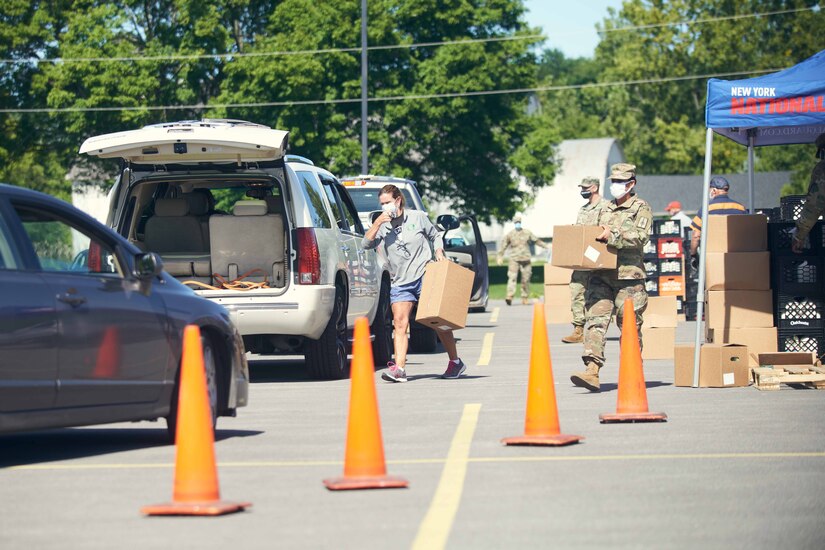
"I want to thank the National Guard from the bottom of my heart," Robert Schrader, the Herkimer County District 3 legislator, said. "I look forward to working with the National Guard each time I have one of these events. It shows people that the military is here to help and that's the biggest thing."
For the recruiters, helping to hand out food reminded them of why they joined the Guard.
"This is absolutely why I joined the National Guard as opposed to active duty or any other branch," Ludwig said.
"When I volunteered at this event... it reminded me how good people actually are," Girard said. "It was heartwarming. It reminded me while I love this job."